Can You Use Laminate Flooring in Kitchens & Bathrooms?
Share
Many homeowners assume laminate flooring is unsuitable for kitchens and bathrooms because of moisture, steam, and spills. Historically, this was true, as traditional laminate would swell or warp when exposed to water for long periods. However, modern laminate technology has evolved. With better materials, engineered cores, and smart installation techniques, laminate can now be a stylish and practical choice for moisture-prone spaces.
In this article, we’ll look at:
● The difference between water-resistant and waterproof laminate
● What to consider before installation
● Maintenance tips for long-lasting results
● How Liberty Floors’ Laminate Collection, especially the 12mm Lignum Fusion Range, can help you achieve the perfect finish
Water-Resistant vs Waterproof: What’s the Difference? Understanding the level of protection your laminate offers is key before installation. Feature Water-Resistant Laminate Waterproof Laminate
Spill
resistance
Core
material
Handles short exposure but not prolonged contact
Standard HDF or MDF that may swell if saturated
Designed to withstand standing water for longer
Advanced polymer or sealed cores to resist moisture
Joints Vulnerable unless properly sealed Tight locking systems prevent water seeping through
Best use Kitchens or utility rooms Bathrooms or high-moisture areas Even waterproof laminate has limits, so proper fitting and care are essential.
Key Considerations for Kitchens and Bathrooms To make laminate flooring last in damp environments, focus on the following points:
1. Seal Every Edge
Use high-quality silicone sealant around walls, cabinets, and door frames to block water. Keep a small expansion gap as recommended, but never leave it open.
2. Prepare the Subfloor Correctly
The subfloor must be level, clean, and dry. Use an underlay with a built-in vapour barrier or moisture layer. In bathrooms, consider a damp-proof membrane beneath it.
3. Allow for Expansion and Contraction
Humidity causes flooring to expand and contract. Leave an 8–12 mm expansion gap and avoid fixing the boards directly under heavy cabinetry.
4. Plan Transitions Carefully
Use appropriate thresholds where laminate meets tiles or vinyl, and ensure no direct water path between different flooring types.
5. Improve Ventilation
Install extractor fans or open windows to reduce humidity after cooking or bathing. Wipe spills quickly and avoid letting water sit on the surface.
6. Consider Appliance Weight
Heavy kitchen appliances should rest on solid supports or plinths, not directly on the laminate, to prevent indentation or strain.
Why Liberty Floors’ 12mm Laminate Collection is a Smart Choice
If you want laminate that looks and performs beautifully, Liberty Floors’ 12mm Laminate Collection is a strong contender. These thicker boards provide superior stability, a more realistic feel underfoot, and better sound absorption. You can explore the full range here: 12mm Laminate Flooring at Liberty Floors.
Benefits of 12mm Laminate
● Enhanced durability for high-traffic areas
● Improved comfort and acoustic control
● Luxury design options that mimic natural wood grains
● Greater stability against bending or flexing
Among this collection, the 12mm Lignum Fusion Range is particularly impressive. This range features high-definition finishes and premium oak tones designed for both modern and traditional interiors. It is ideal for busy kitchens where practicality meets style, and it performs well in bathrooms when fitted with the right protective measures.
How to Fit Laminate in Kitchens and Bathrooms Successfully
Step-by-Step Installation Guide
1. Acclimatise the Boards
Leave the laminate in the room for 48 hours before fitting so it adjusts to the local
temperature and humidity.
2. Prepare the Surface
Check that the subfloor is dry and level. Repair cracks or uneven spots before laying any underlay.
3. Add a Moisture Barrier
Use a vapour control layer or moisture-resistant underlay to protect from rising damp.
4. Lay the Boards
Start along the longest wall and stagger the joints. Keep expansion gaps consistent with spacers.
5. Seal Perimeter Areas
Apply clear silicone around edges, plumbing fixtures, and door thresholds.
6. Add Finishing Profiles
Use trims and thresholds to cover edges and transitions, giving the installation a clean finish.
7. Inspect and Clean
Wipe the surface, remove debris, and check for tight seams or gaps.
How to Keep Your Laminate Looking New
To maintain your laminate flooring and extend its life:
● Clean spills immediately
● Use a pH-neutral cleaner
● Avoid steam mops unless the manufacturer recommends them
● Check seals annually and reapply if necessary
● Use protective pads under furniture
● Avoid dragging heavy items across the floor
High-quality laminate, such as Liberty Floors’ 12mm Lignum Fusion boards, can last for decades when installed and maintained correctly.
When Laminate Might Not Be the Best Fit
There are situations where laminate may still not be ideal. Avoid using it in:
● Wet rooms or shower enclosures
● Rooms with regular flooding or standing water
● Areas with extreme humidity or poor ventilation
In these spaces, consider vinyl or ceramic tile for full waterproofing.
Bring Warmth, Style, and Strength to Every Room
Laminate flooring can completely transform kitchens and bathrooms when you choose the right product and install it with care. With Liberty Floors’ 12mm Laminate Collection, including the 12mm Lignum Fusion Range, you get beauty, durability, and confidence in every plank.
Explore the full laminate floor collection and find your ideal finish today at libertyfloors.co.uk.
Ready to refresh your home? Speak to Liberty Floors for expert advice on moisture-resistant laminate that looks great and lasts for years.




